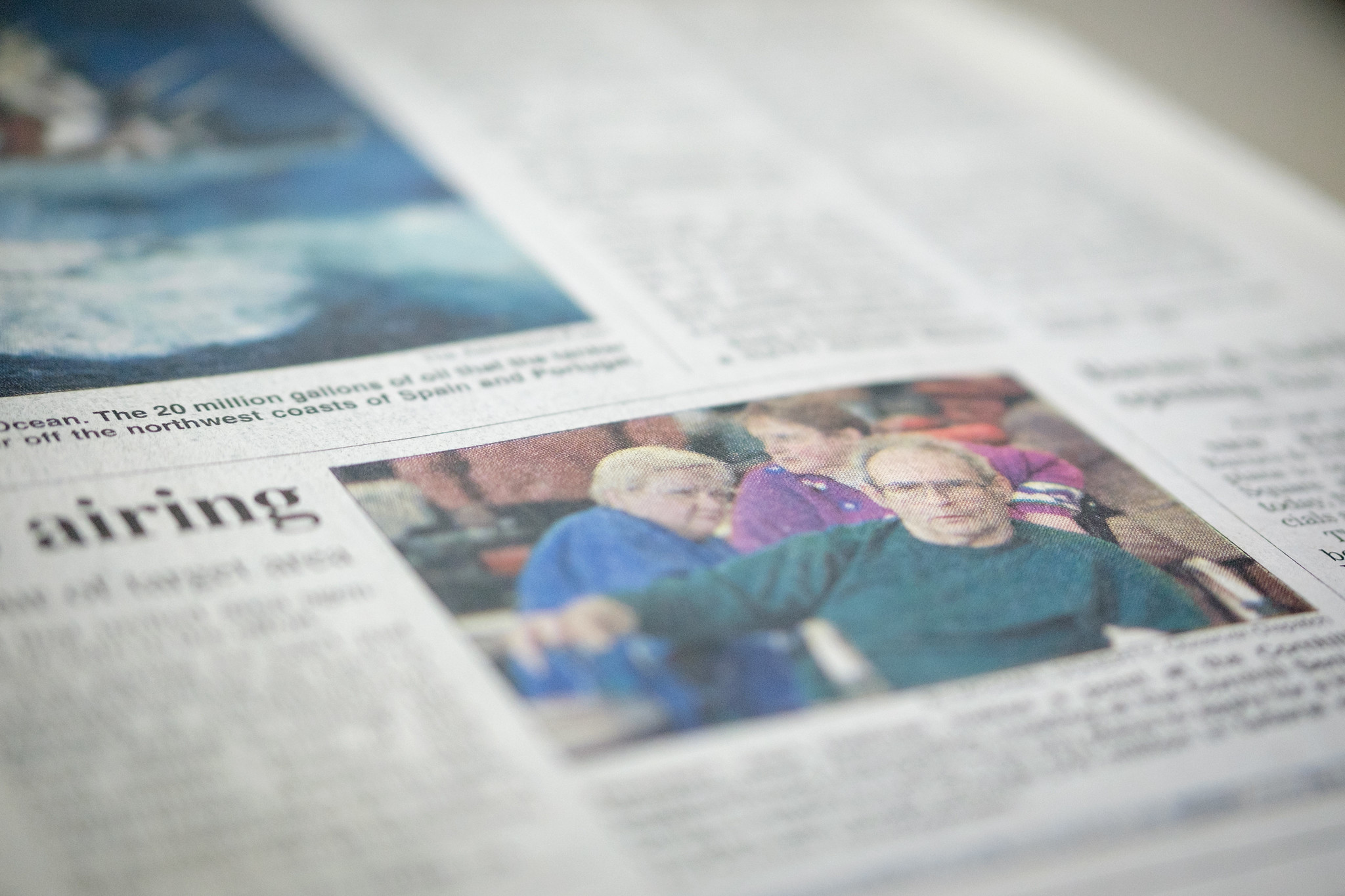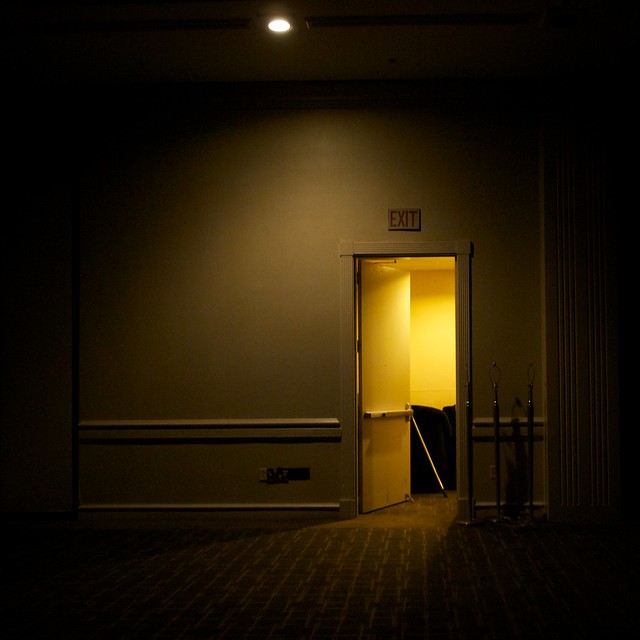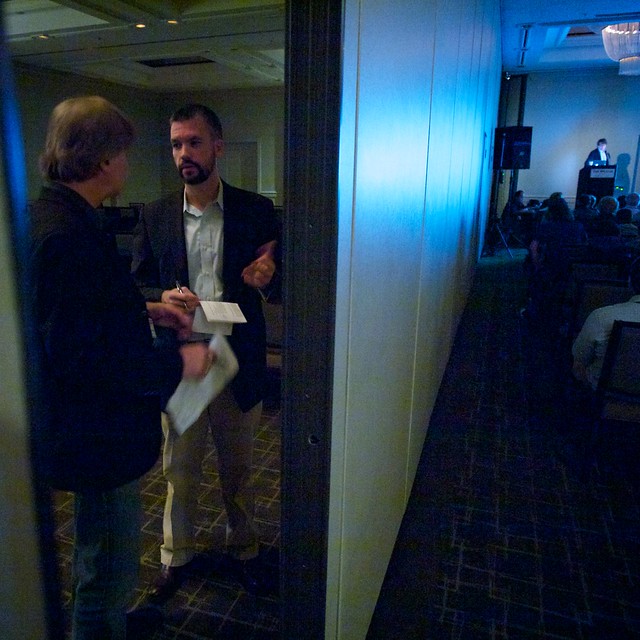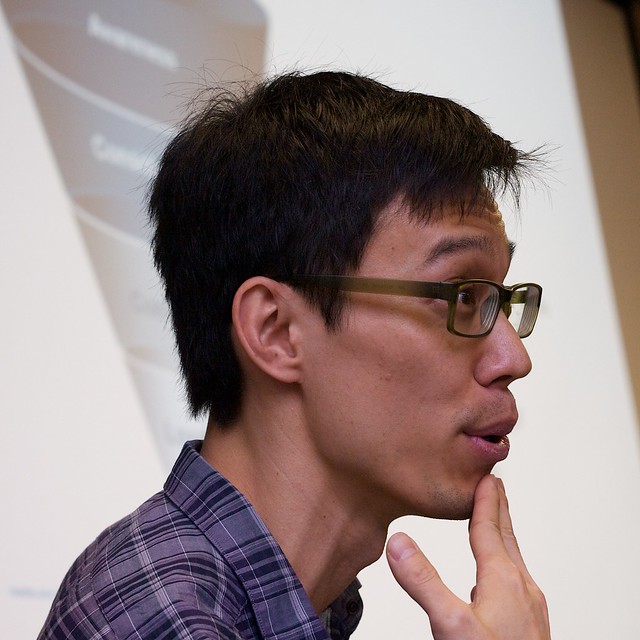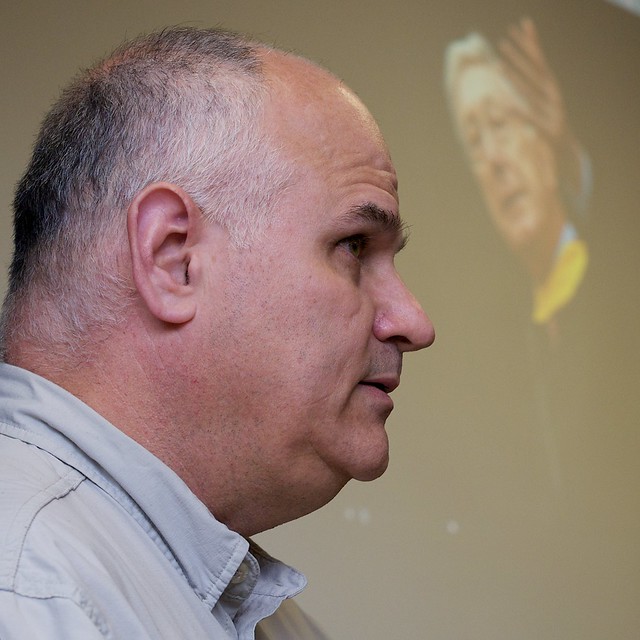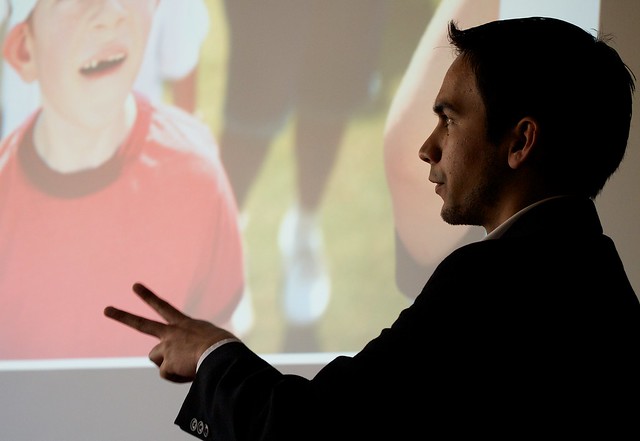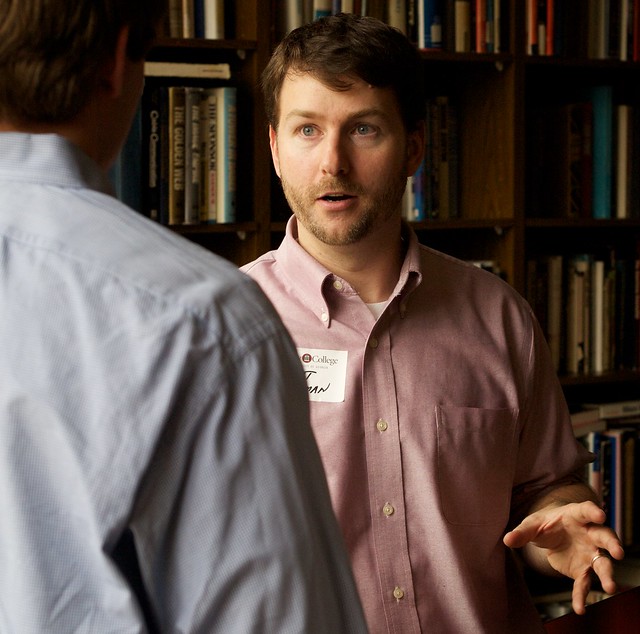Fifteen years ago today, I walked out of a newsroom. It wasn’t my intention that morning to do it and it wasn’t my intention to never return to one as a full-time journalist.
That Tuesday was a bad day; what has happened since then is extraordinary.
I was the photo editor for a mid-size newspaper in upstate New York. I was 31, the youngest and least educated person in the department and I was in charge. My two year anniversary was just a few weeks away, but the 4:00 p.m. news meeting happened … and, well, that was it.
When I was hired, I had a staff of four photojournalists working for me. In September of 2002, one of them left to move to Europe and another was terminated. Down half my staff, I ended up going back into the field to fill gaps while we ran a search for two new photojournalists.
Tuesday, November 19, began the evening before as I pieced together all the things my small staff needed to cover. Each of them had three or four assignments, I had the same. When I came in that morning I learned another editor had decided to send one of my photojournalists out of town, to cover something we weren’t going to run for a month.
By 8:00 a.m., I’d worked out a new schedule with the news editor, increasing my shooting load to seven assignments and dropping a few other things we decided could be sacrificed. Cameras in hand, I hit the road and returned seven hours later.
To prep for the afternoon news meeting, I ran through the wires, caught up with the news and sports editors. One of the events we had dropped earlier was to be a 1A story but there was a major environmental disaster brewing off the coast of Spain, newsworthy enough – and with strong images – to carry the front page. Not ideal, but it would work.
We walked into that news meeting with a plan we were confident in. Less than an hour later, I walked out of the building forever.
I’ll stop and say, right here, that the publisher and executive editor of the paper were great people with a strong sense of commitment to covering our community. In my nearly two years there, our visions aligned on almost everything. The disagreements we had were minimal and always well debated. If nothing else I think we had a healthy respect for each other and often worked through issues, coming to a resolution that was in the best interest of the publication and the community. I never felt my voice wasn’t heard and I hope they never found me to be a difficult editor as I advocated for better visuals.
Neither of those people were present on that Tuesday, the executive editor out of town at a conference and the publisher tied up with other tasks.
The editor left in charge of the meeting was the same one who had, without conferring with me, sent my staffer out of town and off the schedule for the day. We explained how we had reworked our coverage and what our new plan was. I showed the images from Spain, walked through our inside coverage and was ready to move on when it happened.
He didn’t agree to our choices, I had made bad decisions, I had to fix this. The news editor and I explained that we had made the decisions almost nine hours ago when we learned we were down a photographer.
None of that mattered, we didn’t have enough diversity in the paper. There was a neighborhood meeting that night, we had to cover that (it was on the news budget but photo wasn’t staffing it). I explained the night coverage plan and that it would mean dropping two other assignments, one the sports front, to move the night photographer to that meeting. I also questioned whether it was going to add any diversity to our coverage, suspecting that it would be several of the usual citizens there.
The news editor and sports editor both chimed in that we didn’t need the meeting photo and did need the sports photo. The editor snapped that I had caused this problem and I needed to fix it.
There was no more discussion, the meeting ended and I walked back to my office. I stood, staring at the piles of work yet to get done. My full-time position was photo editor, I’d been working now for ten hours with seven of those spent in the field.
I sat down at my computer and wrote one sentence. I hit print and walked to the newsroom printer to pick it up. The sports editor asked what I was up to. “I believe I just quit,” I responded.
In my office, I gathered a few things, then walked to the editor’s office and handed him my one-sentence letter of resignation.
That was it.
He followed me down the hall, said we needed to talk about this and I said there was nothing to talk about. He stomped off, the elevator door opened and I rode down to the first floor and left the building for the last time.
For several hours that evening, I sat in the dark, contemplating what had just happened. The executive editor called from his conference and asked the same thing. I walked him through it, I gave him the background of how this wasn’t an isolated incident. He calmly said he understood but there was nothing he could do to fix this. I said I wouldn’t ask him to.
He then asked me what I was going to do next and I answered him honestly – I had no idea. He said when I figured it out to let him know, he’d be happy to help.
A little while later the news and features editors showed up and demanded I go to dinner with them. They were in shock. I called my two photographers and told them I wasn’t their editor anymore. I’ll never forget the sound of one of their voices as she just said, “Oh, Mark …”
There was a history between that editor and I, part of it known and part of it unknown. Both were heavily tied together.
We developed a system where all the reporters were supposed to talk with someone in photo about their stories, so we could decide if and how to handle the visuals. This meant most of them were in my office on a regular basis, a little alcove off to the side of the newsroom. It was a quiet place, with the lights low so the photographers could work on their images.
It’s also where many of them, discreetly and quietly, sought counsel on how to handle a situation. They were getting unwanted phone calls at night, they felt they were being listened to in the newsroom as they discussed weekend and evening plans.
And that same editor was showing up at bars and parties, offering to buy these women drinks or give them rides home.
With every story of sexual harassment that breaks, of unwanted conversations or suggested outcomes, I end up back in that office, sitting under those low lights, listening to these brilliant journalists talk about their concerns. They never asked me to do anything and it never seemed to rise to a level of fear so far as I could tell back then, but it wasn’t right.
And I should have said something. I took the easier road out of town, never mentioning those conversations to anyone in power in part because I wasn’t sure my colleagues wanted something done, in part because I wasn’t sure what I could do within the newsroom structure.
In contrast, one of my photographers was sexually harassed while on an assignment and I ended up in our publisher’s office demanding she do something. Within an hour, my publisher had a faxed press release in hand announcing changes in the organization’s board of directors.
Was that act more egregious? Was it because it was someone who reported to me? Was it because the resulting action took place outside of my newsroom?
Six weeks after leaving, I went back to university. First to finish my undergraduate degree, then to pursue my master’s degree. And now, 15 years later, I’m a faculty member teaching at a major university, running a visual journalism program I am proud of.
This semester, my advanced course has 20 women in it. Twenty women who are brilliant and witty, 20 women whose voices need to be seen. They are 20 women who should never have to deal with the behavior my colleagues dealt with but many already have.
I am a middle-aged white male in a position of authority – it is my responsibility to speak out. It is my responsibility to step up. It is my responsibility to step aside and let them take their position of equality.
And, for the record, I still have the November 20, 2002, edition of the newspaper. The photos of the oil tanker breaking apart, spilling 20 million gallons of oil into the ocean, are the lead on page one. At the bottom is a photo from the neighborhood meeting.
It’s an old white guy talking in front of two women.
